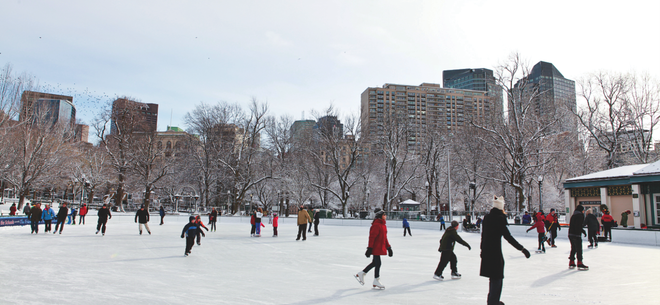Peek at the Past: Frog Pond

The Boston Common Frog Pond is a fun destination for visitors year-round, whether they’re splashing in the shallow water during the summer or twirling on the ice in the winter. However, not many people are aware of the fact that they’re frolicking on the site of a prehistoric gathering place.
Generations ago, the Frog Pond sat as a natural spring along the shoreline of a tidal area where Back Bay stands today. Some of the oldest artifacts known to the city—including a 7,500-year-old spear point—were found there during an archaeological dig in 1986. Archaeologist Joseph Bagley analyzed them to create a portrait of Native American settlers living around the pond 8,000 years before European settlers arrived.
As time turned and the settlers of Boston established their city, the pond became a watering hole for the cattle kept on the Common, and legend has it that the Frog Pond earned its name from the soldiers of the Revolutionary War who hunted its amphibians for food. By the mid-19th century, the Frog Pond was paved with stones and turned into a community gathering point. A large, ornamental fountain was placed in the center and was seen as a symbol of modern Boston. It debuted in 1848 at an extravagant Water Celebration commemorating the introduction of the city’s first public water system.
Throughout the city’s early history, Bostonians raced boats on the pond in the summer and skated when it froze over in the winter, yet shrinking city budgets eventually led to the pond’s decline. The pond leaked, and there was not always water to fill it, and the skating rink (constructed in the 1970s) failed from lack of maintenance. It was revived in 1995 when the city built a new skating rink and leased the whole facility to the Boston Common Frog Pond Foundation.
Today the Frog Pond is co-operated with The Skating Club of Boston and is home to year-round projects and events. And you’ll still find a few friendly amphibians by the pond’s edge—four feet high, bronze-clad and ready for a photo op.


